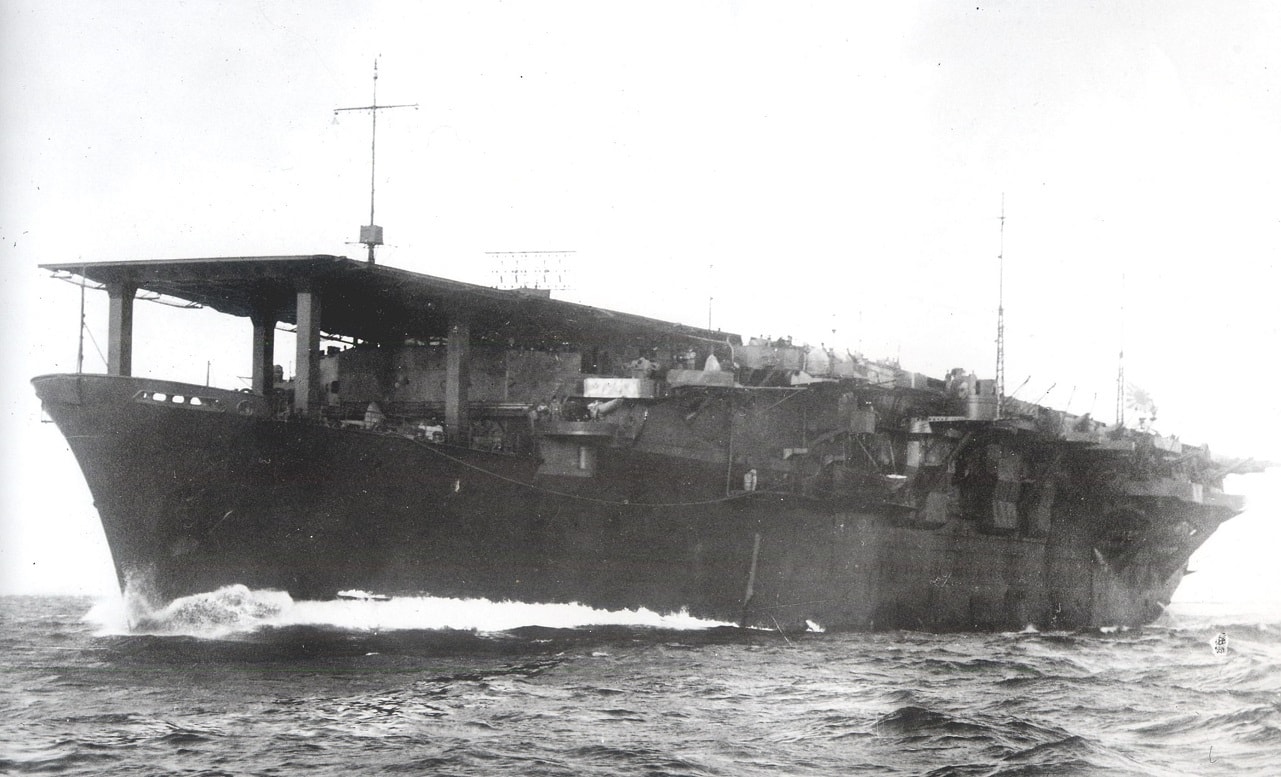During the Second World War, the Imperial Japanese Navy had multiple ocean liners converted to aircraft carriers. Among the most effective of those was the fast luxury passenger liner Argentina Maru, which was subsidized by the Navy Ministry so that she could be converted to a carrier in wartime.
Launched in 1938, for the Mitsui O.S.K. Lines, Ltd., Argentina Maru ran passenger routes between Japan and South America. On December 9, 1942 just year after the attacks on Pearl Harbor, she was purchased by the IJN to be converted to become an escort carrier to help fill the void for the four fleet carriers lost in the June 1942 Battle of Midway.
During the conversion, she received destroyer-type turbines to replace the passenger ship diesel engines, while she was also equipped with facilities to operate 24 aircraft. When her conversion was completed in November 1943, the 16,748-ton escort carrier – renamed Kaiyō – was used primarily as an aircraft transport, which could carry fighters and other aircraft to overseas bases, and later as a training ship. Kaiyō had a number of close calls throughout 1944, but managed to avoid any serious trouble.
Things took a turn for the former ocean liner in the final year of the war. In March, while moored in the Japanese port city of Kure, outside of Hiroshima, she was attacked by American carrier aircraft from Task Force 58. Despite significant damage, the carrier was repaired and was assigned to serve as a target ship for Kamikaze training.
She resumed her pilot training duties and on July 19, 1945 she struck a mine, which inflicted only minor damage. However, six days later she was targeted by aircraft from the Fleet Air Arm of the British Pacific Fleet near Beppu Bay, Kyyushu. Kaiyō had been seriously damaged in the attack, and while attempting to flee from the British aircraft had once again struck a mine.
She was deliberately grounded the following morning so as to prevent her sinking – but the worst was yet to come. On July 28, Kaiyō was attacked again – this time by American aircraft believed to have been from the carrier USS Essex. Hit by some 18 rockets, the warship’s power was knocked out, and the pumps that maintained her stability stopped operating. The damage caused a list to port and at that point she was little more than a sitting duck.
The next day on July 29, she was attacked by B-25J Mitchell medium bombers of the Fifth Air Force and by aircraft operating from the U.S. Navy carrier USS Ticonderoga. While the extent of the damage from the subsequent attacks remains unknown, it was great enough that Captain Shuichi Osuga abandoned attempts to repair the ship. Instead gave the order to coat the machinery with oil and to flood the boilers and hope to stabilize her on the shallow bay floor.
Efforts were made to camouflage the damaged carrier, while some of crewmen remained aboard to man the AA guns, yet on August 9 – the same day the atomic bomb was dropped on the city of Nagasaki on the other side of the island of Kyushu – she was targeted again by Okinawa-based B-25Js in a low-level attack. One of the aircraft caught its wingtip on the camouflage netting and crashed. It was a final victory for the carrier. After that her list increased and she was ordered abandoned. Japan surrendered on August 14, 1945 and the ship remained in place until the wreck was raised in 1946 by Nissan Salvage. Towed closer to shore, she was scrapped in the bay with work completed in early 1948.
Peter Suciu is a Michigan-based writer who has contributed to more than four dozen magazines, newspapers and websites. He regularly writes about military small arms, and is the author of several books on military headgear including A Gallery of Military Headdress, which is available on Amazon.com.

